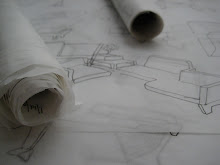
I've been thinking a lot lately about western consumer habits and the whole "material consumption" thing. This period of thought and observation was brought on by two unique pieces of media I have recently absorbed. The first is a book I'm reading entitled Garbage Land: On The Secret Trail Of Trash by Elizabeth Royte, and the second is the movie Koyaanisqatsi: Life out of Balance. It was directed by Godfrey Reggio, produced by Francis Ford Coppola and the soundtrack/score was composed by Phillip Glass.
While I came across the above-mentioned book in the past year or so, and am just now reading it, I first saw Koyaanisqatsi during my undergrad years in the early nineties, and it had a profound effect on me. It is effectively a moving image and soundtrack documentary (no dialogue or narrative) centered on the title of the movie which is the Hopi Indian term for 'life out of balance; crazy life; a life that is unsustainable and must be changed to continue". The beginning offers images of 'life in balance' around the world, as offered by nature and her rules therein. It then gradually moves toward images of urbanity and technology, and the over-consumption that is common to western societies. Without saying a word, the movie uses the images, collected from 1975 to 1983, to convey the realities of consumption and its chaotic effect on us and the planet.
This imagery and its embedded message have been with me for years. What was most interesting to me was seeing it again recently after beginning to read the book about garbage. The two different media really hit me hard, reminding me of the reasons that I build things using upcycled furniture industry waste. I suppose it was movies like this that initially made me look critically at the waste we generate and the way we live in relative denial about it.
My blog posts usually discuss the ups and downs of woodworking, furniture design and dumpster diving. I like taking a break from that course to discuss some of the more philosophical motivations of my work. If you aren't afraid to expand your horizons a bit, see this movie. It might make sense to you; it might not. I didn't get the entire movie and all of its subtle nuances the first time I saw it, but the core message was clear as a bell. If you get off your couch after watching it and have a more critical eye regarding the realities of our "modern" existence, the movie will have effectively made its point. It is supposed to be an eye-opener, and even though dated, it will awaken you even if only for an hour and twenty-seven minutes.
Thanks for listening.



No comments:
Post a Comment